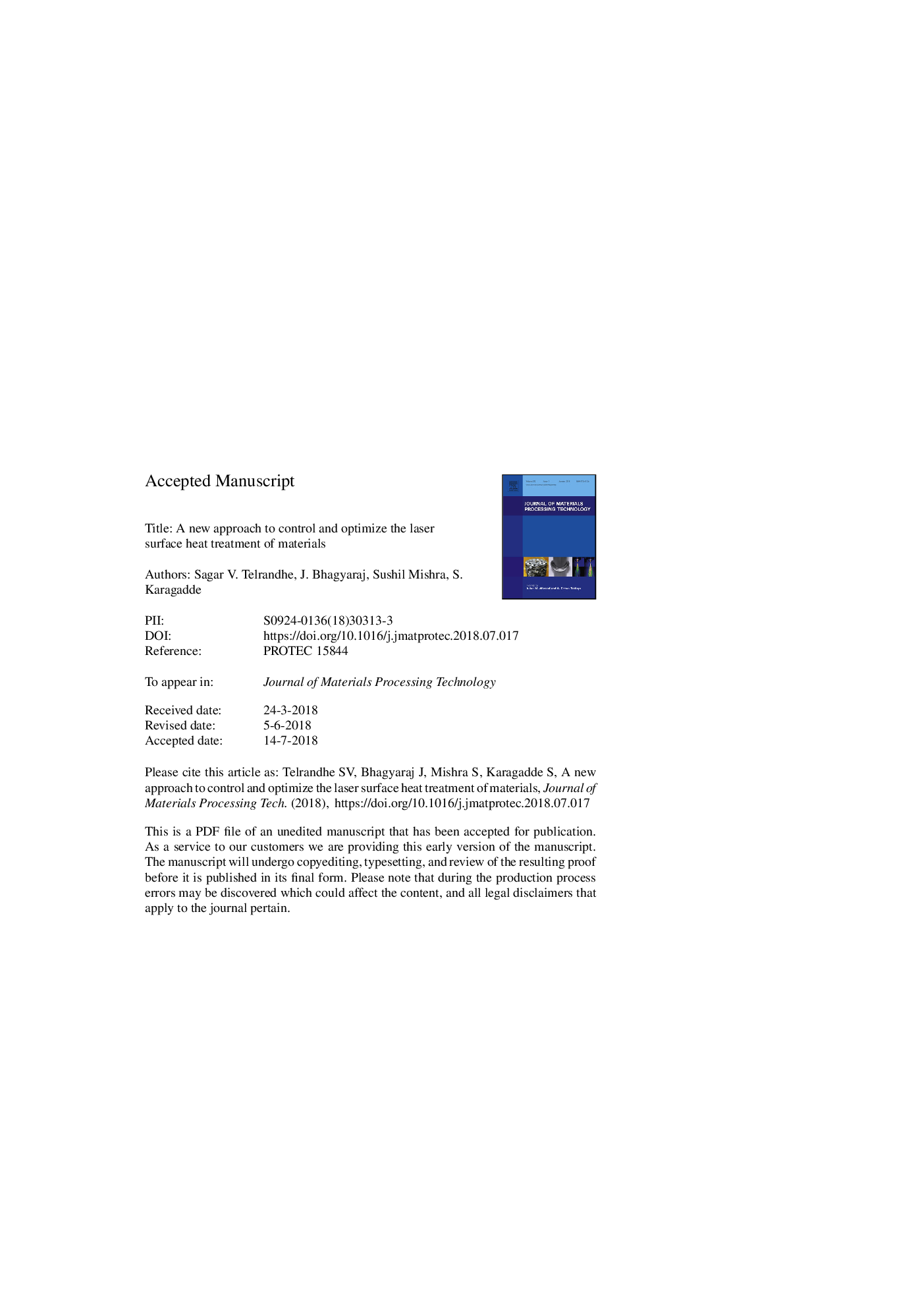| Article ID | Journal | Published Year | Pages | File Type |
|---|---|---|---|---|
| 7176211 | Journal of Materials Processing Technology | 2018 | 27 Pages |
Abstract
Laser heating is often used to perform the surface treatment by modifying local microstructural and mechanical properties of components having complex geometries. In this study, the laser surface heat treatment of a rotating cylindrical work-piece was investigated using both experimental and numerical modeling approaches, with an aim to correlate and predict the temperature distribution during the process. The depth of the laser affected zone was predicted by solving the transient heat transfer with a moving laser heat source, using finite element analysis. The temperatures derived from the microstructural examination of the experimental specimen were found to closely agree with the predicted results from the numerical simulations. The numerical and experimental results have also led to a new observation, indicating a linear variation of the absorptivity with the laser scan speed. The prediction of the cooling curves from simulation suggested the βâαʺphase transformation and the recovery of the β phase, and the existence of new phases were confirmed through electron microscopy. The rapid cooling during the laser surface treatment was found to induce a flake-structure that consisted of both martensite (αʺ) and regained bcc (β) phase. A new polynomial input power function has been proposed to achieve uniform distribution of the heat penetration along the cylinder axis, saving about 10% of the material wastage.
Related Topics
Physical Sciences and Engineering
Engineering
Industrial and Manufacturing Engineering
Authors
Sagar V. Telrandhe, Jayabalan Bhagyaraj, Sushil Mishra, Shyamprasad Karagadde,
